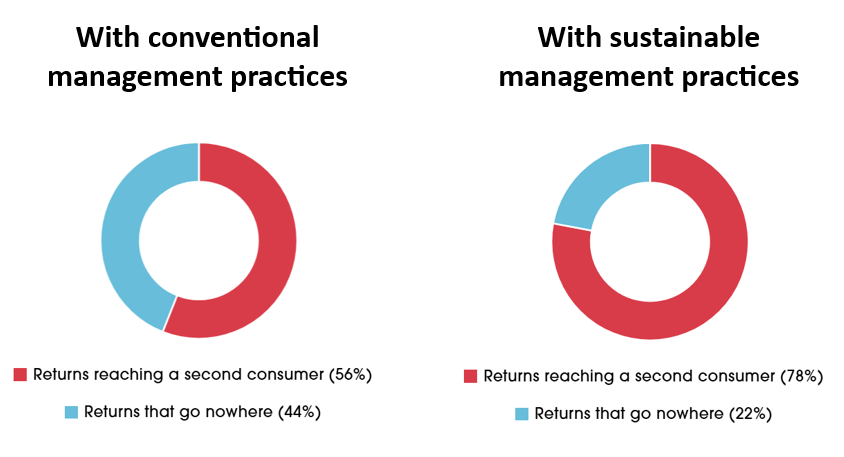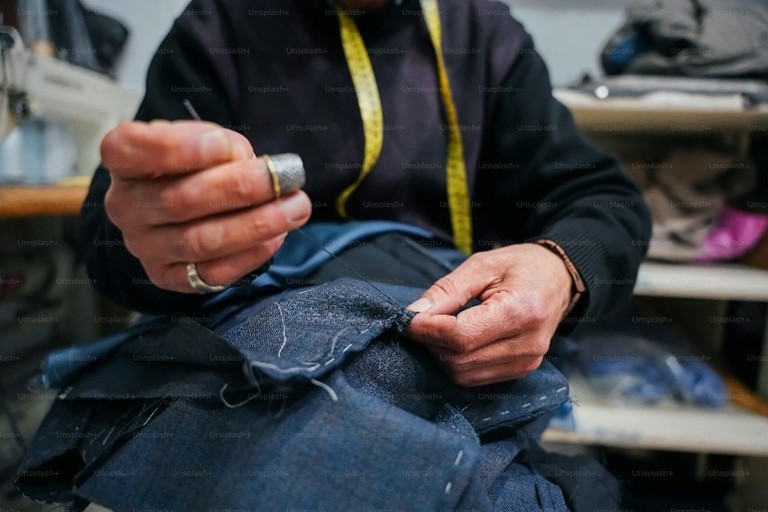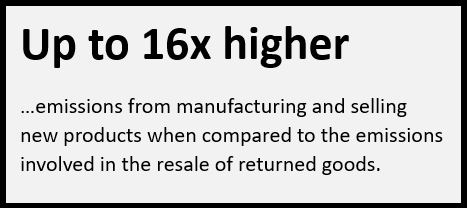By ReBound
Retail returns have been under fire for years for their disappointing sustainability stats:
More than 4 billion tons of returned US products went to landfills in 2022, and 24 million metric tons of CO2 emissions were released from the transport of returned goods.
It’s a bigger problem with ecommerce, where than traditional stores — and an even bigger problem for the fashion eCommerce industry.
But despite these worrying statistics, there hasn’t been much research into the environmental impact of the full lifecycle of ecommerce returns — until now.
New research from the Ben-Gurion University of the Negev and ReBound Returns has revealed the alarming impact of unchecked ecommerce returns, and the value of circular solutions to reduce the harm caused by both sellers and consumers.
Here are the key findings:
1. Returns are going nowhere
This new research was built on a dataset covering 630,000 products returned in the EU, mapping the flow of returned products and quantifying their full lifecycle impact.
Their first finding?
As much as 44% of returned goods never reach another consumer.
It’s a serious inefficiency in the current state of returns — and a huge amount of waste on the production of goods that never get used.

So where exactly are these products ending up?
From the 22% of unused returns from companies with sustainable management practices:
- Only 9% are recycled
- 6% go to landfill
- 4% are incinerated
- And 4% are lost in transit.
If online retailers want to curb this waste, they need tighter control over where their ecommerce returns end up. They need a focus on maximising the resale opportunities of every returned product — to ease both their own costs, and the costs to the environment.
But to do that, retailers need to know which returned products are salvageable. And that means understanding the reasons behind their returns.
2. Most returns are fit for resale
Plenty of online retailers suffer from the return of valid goods — products with no faults or breakage that are sold exactly as advertised.
It’s an inherent part of eCommerce, where consumers don’t get the chance to touch, feel, or try before they buy.
In fashion, those problems are further exacerbated:

Sizing can be inconsistent between brands or styles, and it’s become standard consumer practice to order multiple variations or sizes of the same garment — with the full intention of returning half of their basket once they’ve tried things on.
It’s often assumed that most ecommerce returns are down to damage or faults, making them unfit for resale, and doomed to the landfill.
But the research shows a stark difference:
Damage accounts for just a tiny fraction of returns. The vast majority of products are returned due to customer preference, or fashion items that don’t fit.
And that means the majority of returns are ripe for resale.
With a focus on circular solutions — assessing and reconditioning returned products to get them back out to new customers — retailers can recoup some of the costs they’ve already dropped into the products they produce.
They can limit the material waste that comes with landfills and incineration, and help to justify the emissions from creating a product that would otherwise have nowhere to go.
But if those emissions have already happened, won’t the resale of their products just add more?
That’s where we come to the real meat of the research:
3. Resale emissions are a fraction of production
It’s a common objection to circular solutions:
Between the cost of logistics and the emissions involved in processing returns, retailers often prefer to cut their losses: either disposing of returned items or issuing refunds and letting customers keep the product.

But this new research paints an entirely different picture:
The study shows that greenhouse gas emissions (GHG) from the production of goods is up to 16 times higher than processing them for resale — including transport, packaging, reconditioning, and cleaning combined.
For retailers looking at circular solutions, that means their returned products can go through multiple cycles of resale and return — and still be more eco-friendly than manufacturing a new product to get the same sale.
No matter what product you’re selling (or how poorly it fits), it’s unlikely to go through more than 16 rounds of return and resale without finding a permanent home with a consumer.
So, for the majority of online retailers, a circular approach could prove less harmful than the ‘cut your losses’ approach — one that in most cases, usually ends up with a landfill.
4. Breaking the cycle
We’ve long known the environmental impact of inefficient returns in ecommerce and fashion. Not just with excessive emissions, but the ever-growing landfills that are brimming with perfectly good products.
This research sheds new light on the sheer scale of the problem and shows how much we’ve been underestimating the effects of a returns system that’s not fit for purpose.
If we want to see a future of responsible retail — one where business can be good, and still be doing good — we need retailers who are willing to make sustainable ecommerce returns a deep-rooted part of their philosophy.
This is where circular returns can help: one where unwanted goods are rescued from the spiral that leads to landfill and given a second chance (or a 16th chance) to find a home with new consumers.
But to see a real change, we’ll need support from both sides of the sale:
The retailers who switch to sustainable practices — and the consumers who switch to the companies that champion them.
Key takeaways:
- Up to 44% of returned ecommerce goods don’t find a home
- Only a tiny fraction are unsaleable
- Returns can be resold up to 16 times before causing more harm than a new product
- Ecommerce retailers can reduce waste and emissions with circular solutions for sustainable returns
Consumer returns should be an opportunity to stand out against your competitors. With ReBound, you will.
Published 24/10/2024



